Rank Species | Genus Kokia Higher classification Kokia | |
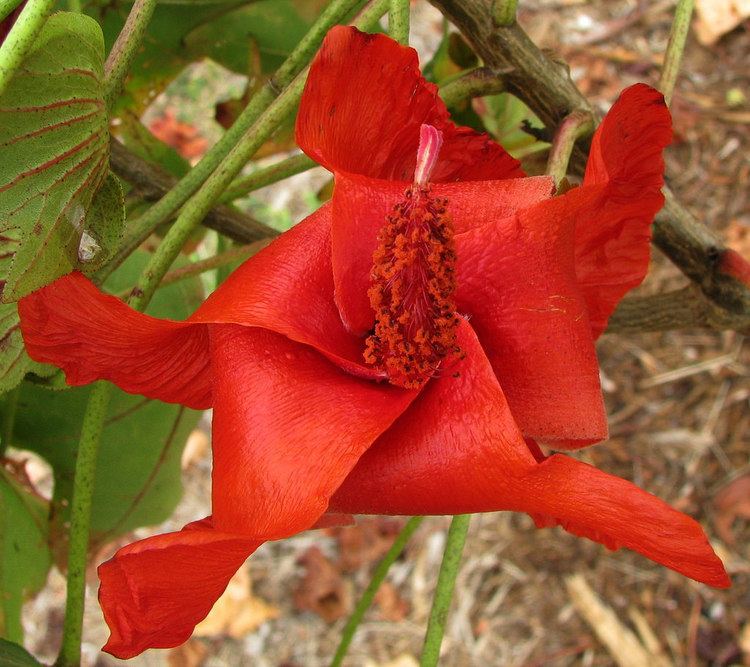 | ||
Similar Kokia, Silene tomentosa, Kokia kauaiensis, Kokia drynarioides, Lotus berthelotii | ||
Kokia cookei is a small, deciduous tree commonly known as the kokiʻo, Molokaʻi treecotton, Cooke's kokiʻo, or Molokaʻi kokiʻo.
Contents
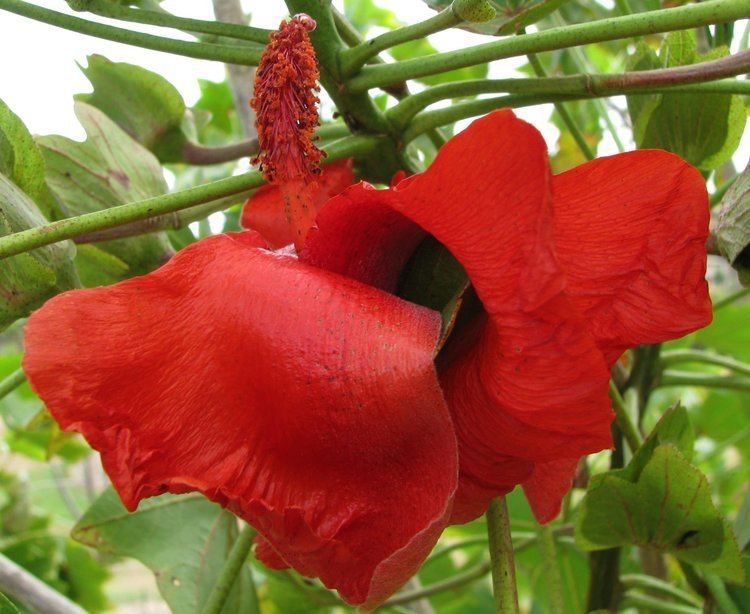
Distribution
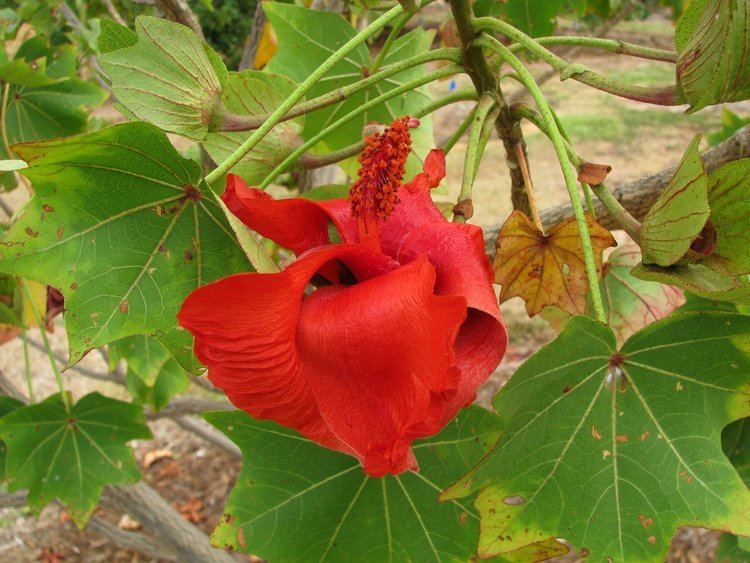
The Kokia species is only known to have existed in the lowlands of western Molokaʻi island of the Hawaiian Islands. Presumably, its native habitat was lowland dry forests on the leeward western end of the island. This was all but cut down by Polynesian settlers about the year 1000 CE to make room for agriculture. It seems to have been noted by these settlers, as suggested by the native name hau heleʻula ("entirely red hau"). The three trees initially found grew near Mahana, northeast of Puu Nana. at approximately 200 metres (660 ft) elevation.
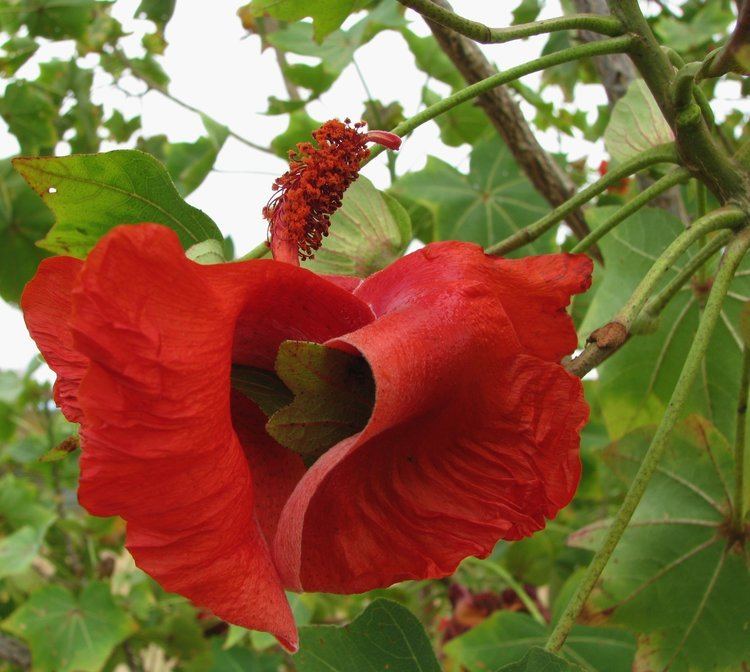
Although the original forest ecosystem was destroyed and replaced by shrubland with plants like native ʻilieʻe (Plumbago zeylanica) and introduced flora, Molokaʻi kokiʻo survived initially. It seems to have had some tolerance to habitat change, enabling it to hang on until the 19th century.
Conservation
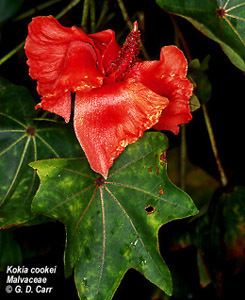
It is considered one of the rarest and most endangered plant species in the world. Even when first found in the 1860s, only three trees could be located. It was presumed extinct in the 1950s when the last surviving seedling perished. However, in 1970, a single plant was discovered on the same Kauluwai estate where the "last" individual grew, presumably a surviving relict of one of the plants previously cultivated there. Although this tree was destroyed in a fire in 1978, a branch that was removed earlier was grafted onto the related, and also endangered, Kokia kauaiensis. Currently there exist about 23 grafted plants.
Putative pollinators
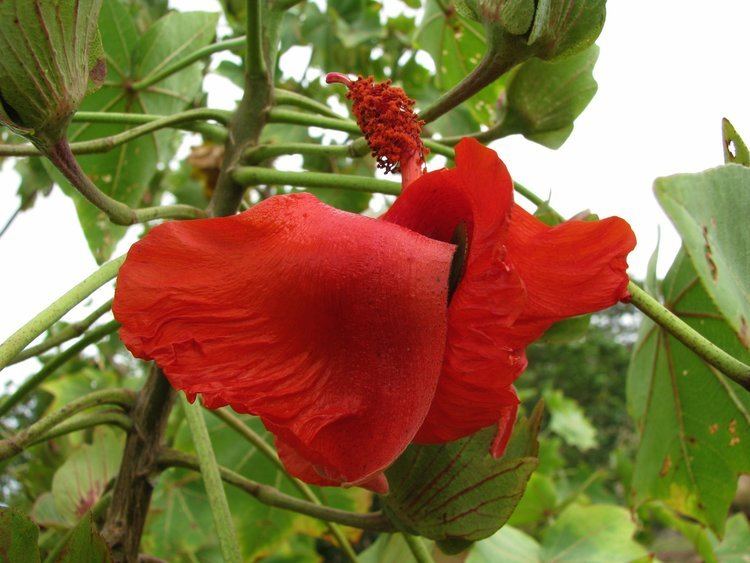
Its eventual extinction in wild state of the species seems for a large part due to coextinction with native nectarivorous birds. K. cookei seems to be adapted to bird pollination like most related Malvaceae. The birds, Drepanidinae, were extirpated from dryland forest by Polynesians, and most remaining species entirely succumbed to mosquito-borne diseases like avian malaria (Plasmodium relictum) and fowlpox in the 19th century.

The wide, large flowers of Molokaʻi kokiʻo would have admitted a wide range of potential pollinators (as opposed to e.g. Hibiscadelphus):
Of these, the ʻIʻiwi was perhaps the most important, given that the other species are/were all either smallish and short-billed (K. cookei has quite large flowers), or did probably not occur in its habitat in significant numbers.
